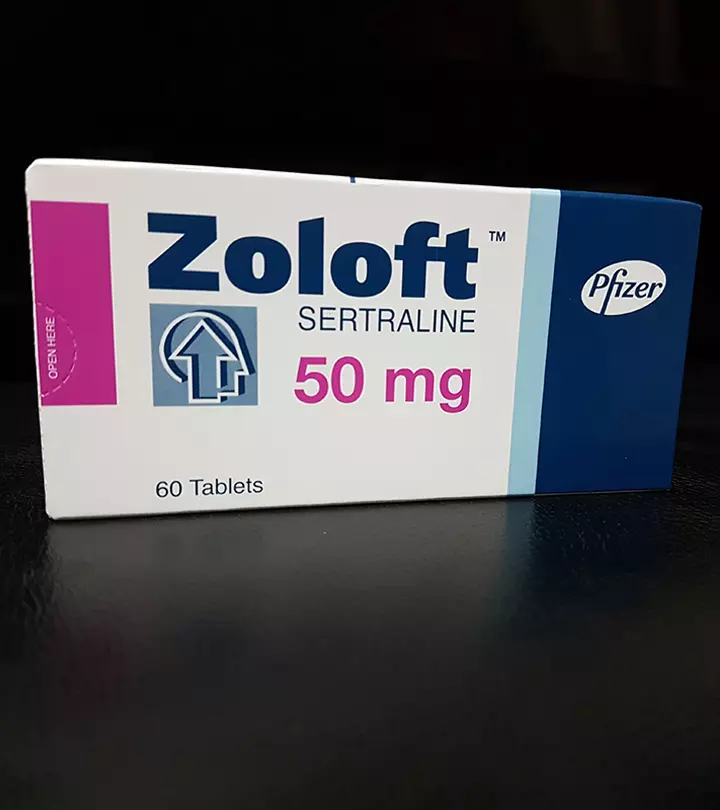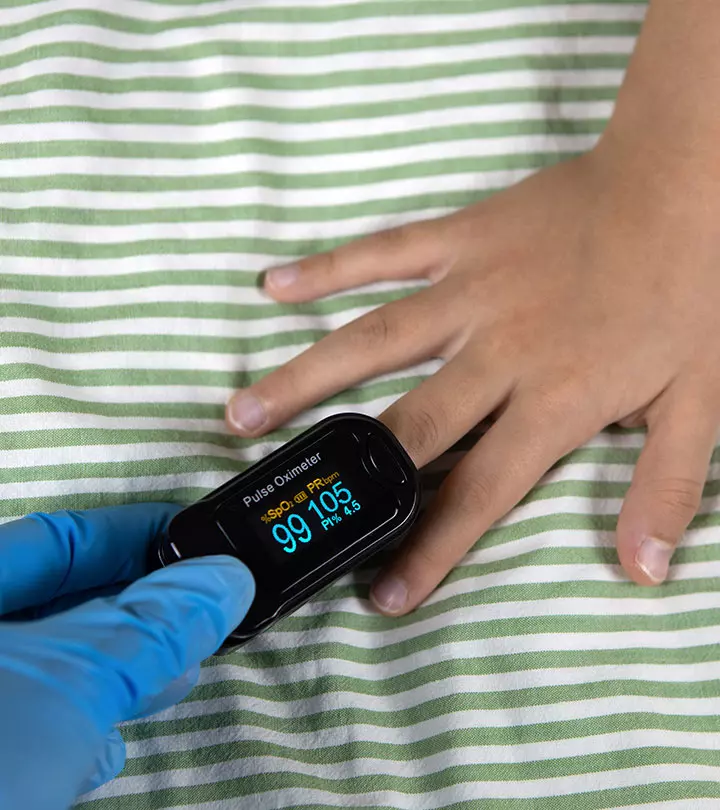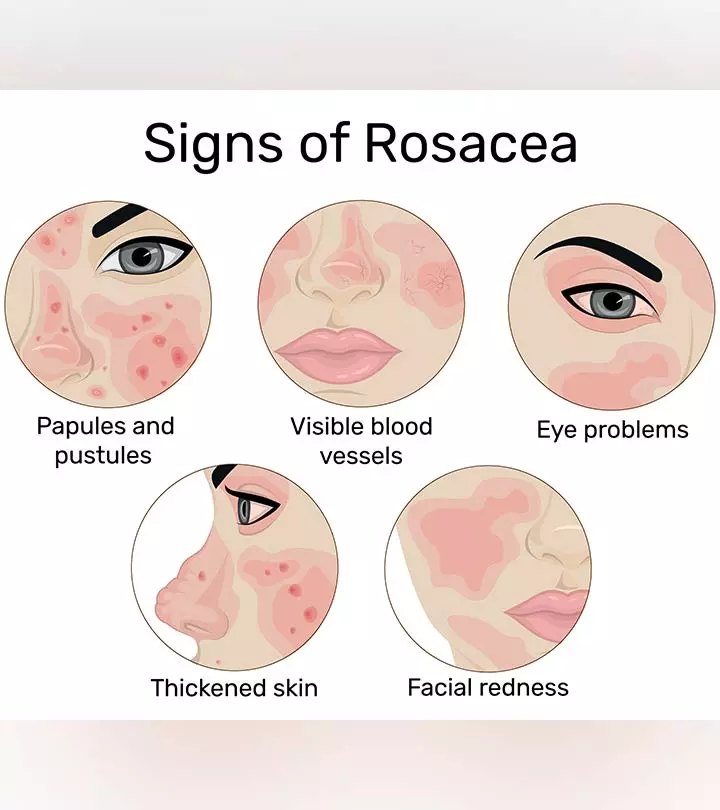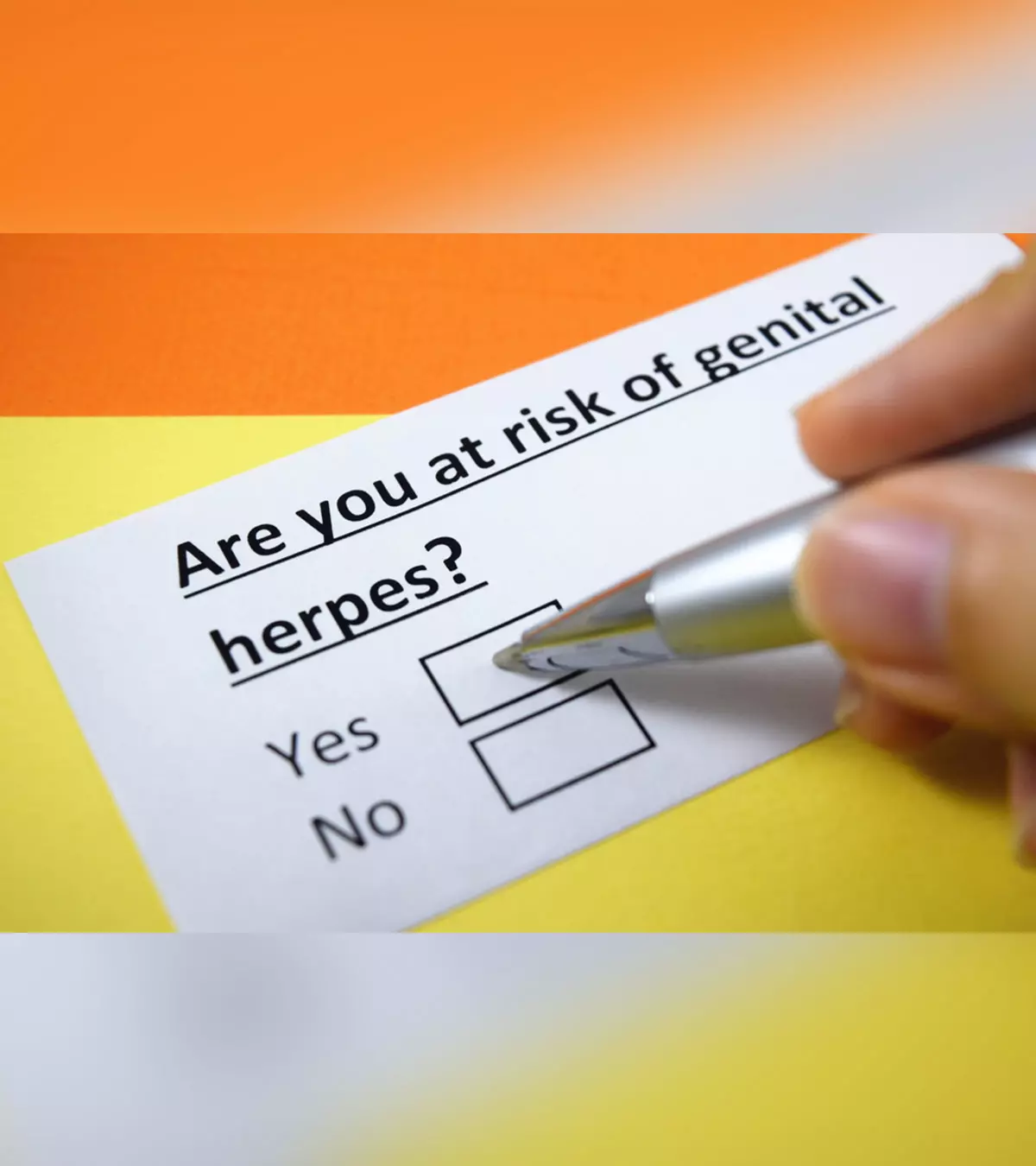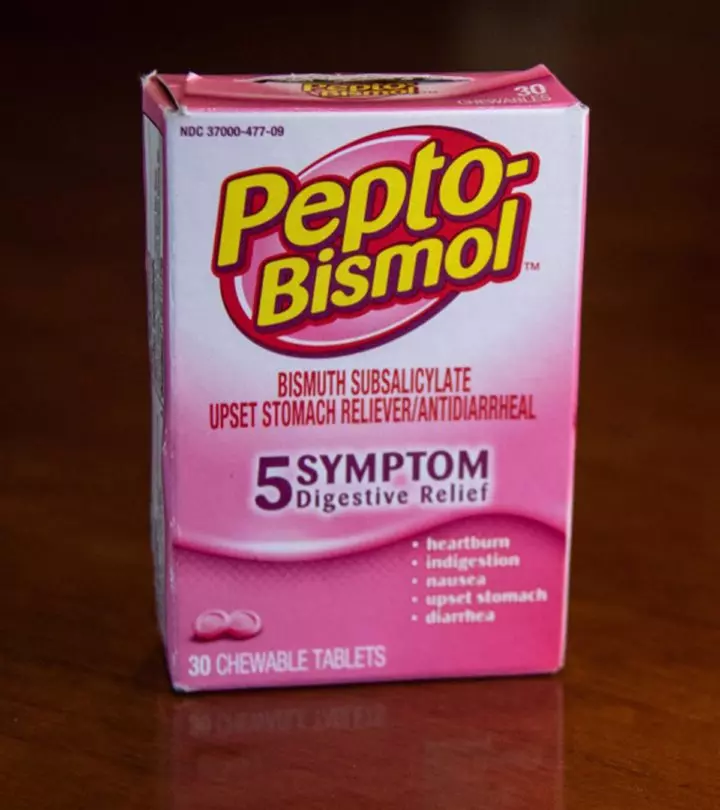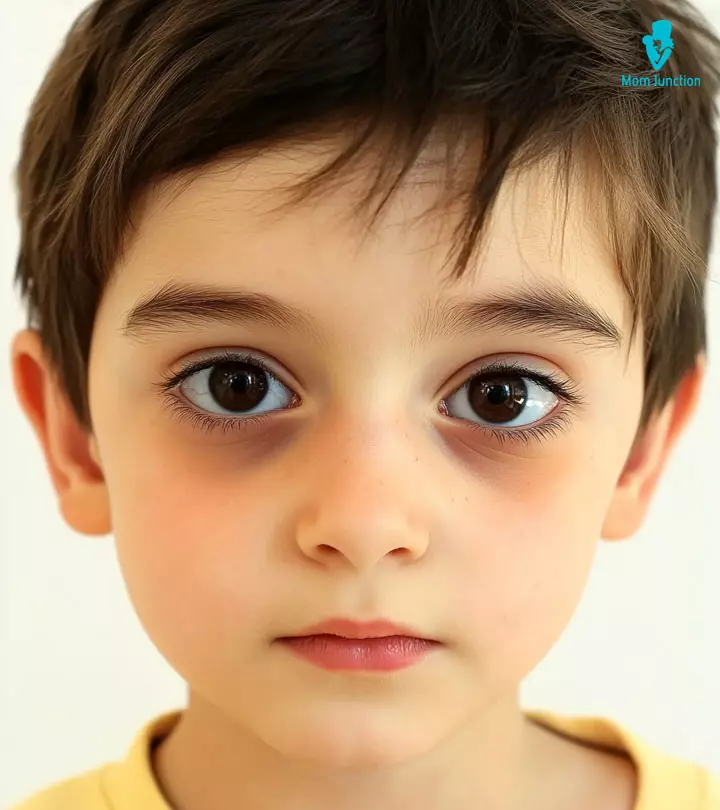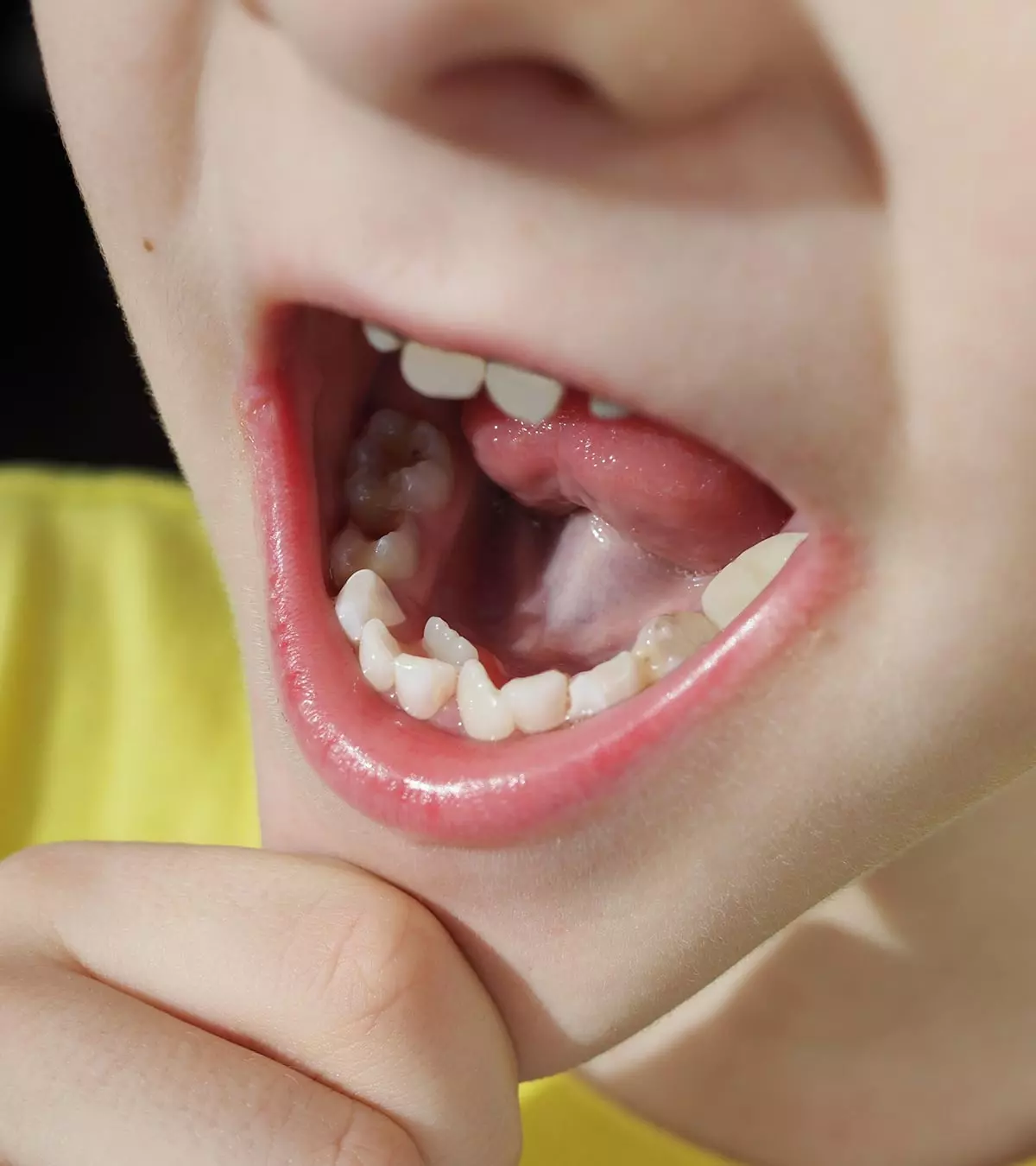
Image: iStock
Keratosis pilaris on kids may cause dry and rough patches and tiny bumps on the skin. Although not harmful, these skin lesions may cause itching. The condition can often be seen on the face, neck, legs, thighs, and buttocks. Keratosis pilaris is a common skin condition that falls under the realm of dermatology. The affected skin may have a chicken skin-like appearance and is often called ‘chicken skin.’ Seek pediatric attention if you suspect keratosis pilaris in your child. Read on to know the causes, symptoms, and treatment of keratosis pilaris in children.

Key Pointers
- Dry skin and tiny red or brownish-black bumps on the skin are signs of keratosis pilaris in children.
- It could be seen as an additional condition in children with eczema.
- To diagnose keratosis pilaris, a doctor would perform a physical examination and refer to the child’s medical and family history.
- There is no treatment for keratosis pilaris, but the medications aim to reduce the symptoms.
- Constant moisturizing, gentle skin exfoliation, and warm water baths may temporarily relieve the symptoms.
What Does Keratosis Pilaris Look Like?
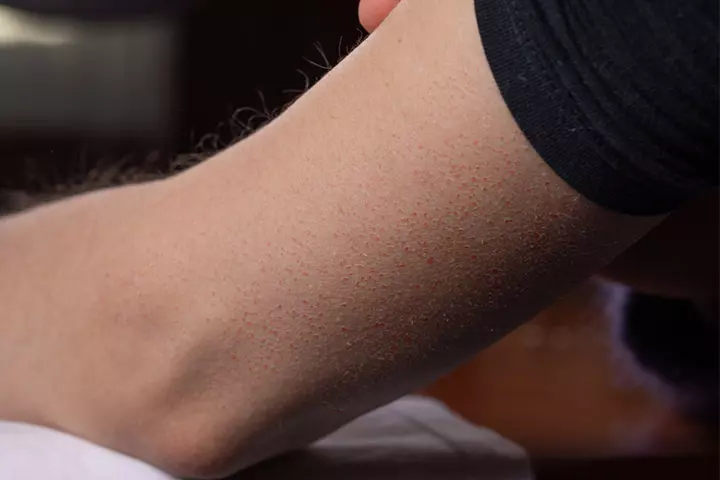
Keratosis pilaris is a frequently occurring genetic disorder of follicular hyperkeratosis, characterized by the keratinization of hair follicles. In this condition, the skin looks like when you have goosebumps. The tiny bumps may appear whitish red or brownish-black based on the color of your skin. The skin would feel dry and rough like sandpaper or chicken skin. If these bumps provoke itching or irritation, they may result in redness and mild inflammation that may lead to scarring.
 Quick fact
Quick factCauses Of Keratosis Pilaris In Children
Keratosis pilaris is caused due to the blockage of the skin pores due to the excess production of keratiniA fibrous protein that makes up the structure of hair, nails, and the outer layer of skin . The clogged pores block the growth of hair follicles, resulting in small bumps on the skin. Although the exact cause of keratin build-up is unknown, it is believed to be hereditary (1).
 Research finds
Research findsWho Is At Risk Of Developing Keratosis Pilaris?

According to the American Academy of Dermatology Association (AAD), keratosis pilaris can occur at any age but is most common in children under two and teenagers (2). The condition is also known to affect 50 to 80% of adolescents (3). Sometimes, it is also seen as a secondary condition in children with eczemaiExtremely dry, itchy rashes that come and go, also known as atopic dermatitis or atopic dermatitisiA condition that results in dry, itchy, and inflammatory skin in response to specific foods or medicines. (4). Children with the following factors could also be at a higher risk of developing keratosis pilaris (3).
- A family history of the condition
- Asthma
- Dry skin
- Obesity
 Quick fact
Quick factSymptoms Of Keratosis Pilaris
The symptoms of the condition could differ in different children. Here are some common symptoms of keratosis pilaris.
- Small, hard bumps on the back of the upper arms, shoulders, thighs, buttocks, and sometimes, cheeks
- Bumps with pale, dry skin scales on top
- Bumps within the hair from the follicle
As these symptoms may also resemble other skin conditions, consult your healthcare provider for the exact diagnosis.
Diagnosis Of Keratosis Pilaris In Children
Your child’s doctor would do a physical examination to identify keratosis pilaris. They may also ask about your family and child’s medical history.
In some rare cases, a small sample of the skin may be sent for examination if the physical examination fails to prove the diagnosis. Other rare clinical interventions that may be ordered to confirm the diagnosis include dermoscopy, which helps detect hair shaft abnormalities and offers a clearer view of structures beneath the skin and hair (9).
Complications Of Keratosis Pilaris In Children
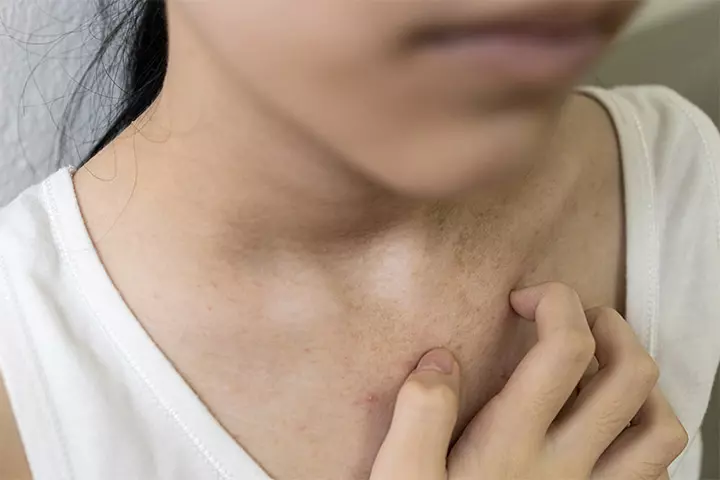
Keratosis pilaris is a non-contagious and harmless skin condition that may not cause any severe health issues or complications in children. However, it may cause the skin to become dry and flaky. Also, older children and teenagers may feel self-conscious and embarrassed due to the tiny bumps. Most medical practitioners consider the condition as more of a cosmetic problem than a health condition.
 Be watchful
Be watchfulTreatment For Keratosis Pilaris
Although there is no permanent treatment for keratosis pilaris, the symptoms can be managed. In most children, keratosis pilaris goes away on its own with age. However, if the symptoms recur often or if the condition affects your child’s self-image, it is best to take your child to your pediatrician.
Your doctor may prescribe creams and lotions containing alpha hydroxy acidiAcids found in sugarcane, sour milk, and specific fruits and used in several skincare products. , salicylic acidiAn organic compound used to exfoliate the skin, maintain clean pores, and prevent acne. , lactic acid, urea, or tretinoiniA medicated topical cream used to treat acne, wrinkles, and sunburns. , which might reduce the bumps. Moisturizing the affected areas regularly by applying moisturizer may also help prevent it (4). Since there is no permanent cure for the condition, your child should maintain a proper skincare routine and use prescribed lotions or creams as medically advised to help prevent recurrence (12).
Sakina S. Bajowala, a mother, board-certified pediatrician, and allergist/immunologist, shares how she addresses keratosis pilaris for herself and her child. She writes, “I generally have great results with an over-the-counter lactic acid lotion twice daily and daily exfoliation with a warm wet washcloth (a new one every day, please — unless you like rubbing bacteria into your skin)… I have KP, and so does my three-year-old son. But you won’t find us hiding when the warm weather arrives! With good skin care, we’ll be ready for summer this year, and so will you! (i).”
 Quick fact
Quick factHome Care Treatments For Keratosis Pilaris
As keratosis pilaris can be a long-term condition, you can use certain home care treatments after consultation with your child’s doctor.
- Short and warm baths might help unclog or loosen the pores of the skin. Do not let your children take longer baths, as they may strip the body’s natural oils.
- While giving a bath, gently exfoliate your child’s skin using a soft loofah or a slightly rough washcloth to remove the dead skin cells. Avoid over-scrubbing the skin as it might aggravate your child’s condition. Even natural sugar can be a mild exfoliant.
- Make it a habit to moisturize your child’s skin often to prevent it from becoming dry.
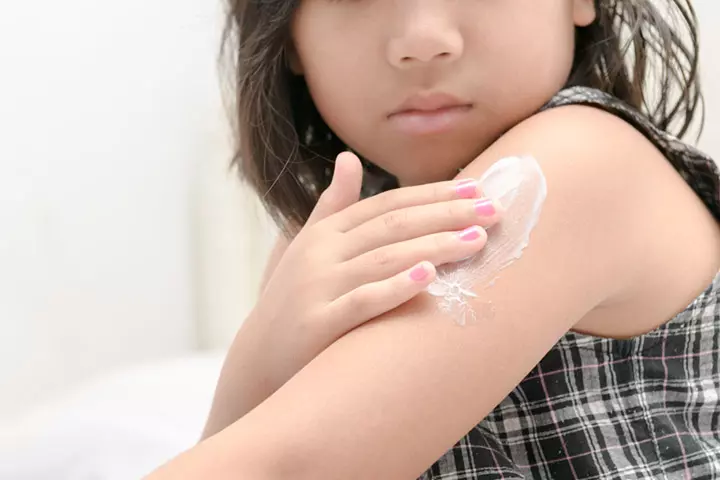
- If your child has started waxing or shaving, ask them to take a break from waxing until the symptoms subside, as waxing can cause a flare-up.
- Ensure your children do not wear tight clothes as it might cause friction and consequent skin irritation.
- Using a dehumidifier can help keep your child’s skin from drying. Also, instruct your children to drink a sufficient amount of water every day.
- Omega-3 fatty acids are said to be skin-friendly. Make sure you include these healthy fats in your child’s diet.
 Quick tip
Quick tip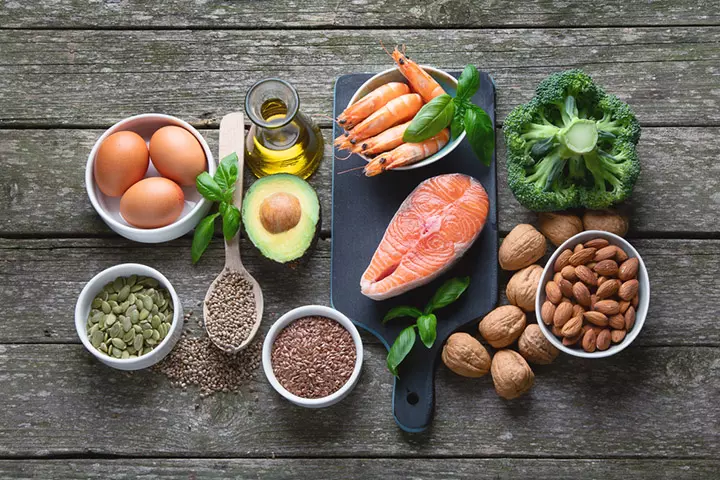
Frequently Asked Questions
1. At what age does keratosis pilaris disappear?
If a child develops keratosis pilaris in childhood, its symptoms will usually resolve by adolescence. However, occasional flare-ups may occur during puberty. On the other hand, if the condition develops during the teenage years, it will clear up when they reach their 20s (2).
2. Does diet affect keratosis pilaris in children?
Although scientific studies do not show the relationship between keratosis and diet, patients may be suggested to follow a gluten-free diet and consume more sources of essential fatty acids, such as fish and nuts, for relief from the condition (5).
3. Is there any way to make keratosis pilaris less noticeable in kids?
Daily skin care may help minimize the appearance of the bumps or make them less noticeable. According to the American Academy of Dermatology, this can be achieved by first gently exfoliating the affected skin (do not scrub) and then applying the recommended amount of the skin care product called keratolytic or chemical exfoliator, followed by an unscented, oil-free moisturizer (8).
4. Is keratosis pilaris linked to any nutritional deficiencies?
Although there’s no direct proven link between keratosis pilaris and deficiencies, some sources suggest it’s more common in people with insufficient vitamin A levels. Eating a balanced diet with enough vitamin A or taking supplements a pediatrician recommends may help reduce this risk (3).
Keratosis pilaris in kids occurs due to keratin build-up in skin pores. The otherwise harmless condition causes pale, scaly, and itchy bumps to appear on the skin. It usually does not require treatment and may fade away with age. However, it may be a cosmetic problem that can cause diminished confidence and low self-esteem in children and adolescents. Make sure you explain the condition to your child and help them establish a skin-care routine. You may also take steps to keep dry skin in children under control, especially in cold and dry weather conditions. Check with a dermatologist about suitable topical preparations or home remedies for managing the symptoms.
Infographic: Home Care Tips For Keratosis Pilaris In Children
Keratosis pilaris is a harmless skin condition that seldom causes complications. If your child has this condition for a prolonged time, consider implementing home-care strategies for effective management after consulting a pediatrician. Refer to the infographic below for simple steps to manage this skin disorder at home.
Some thing wrong with infographic shortcode. please verify shortcode syntaxIllustration: What Causes Keratosis Pilaris In Children & How To Treat It?
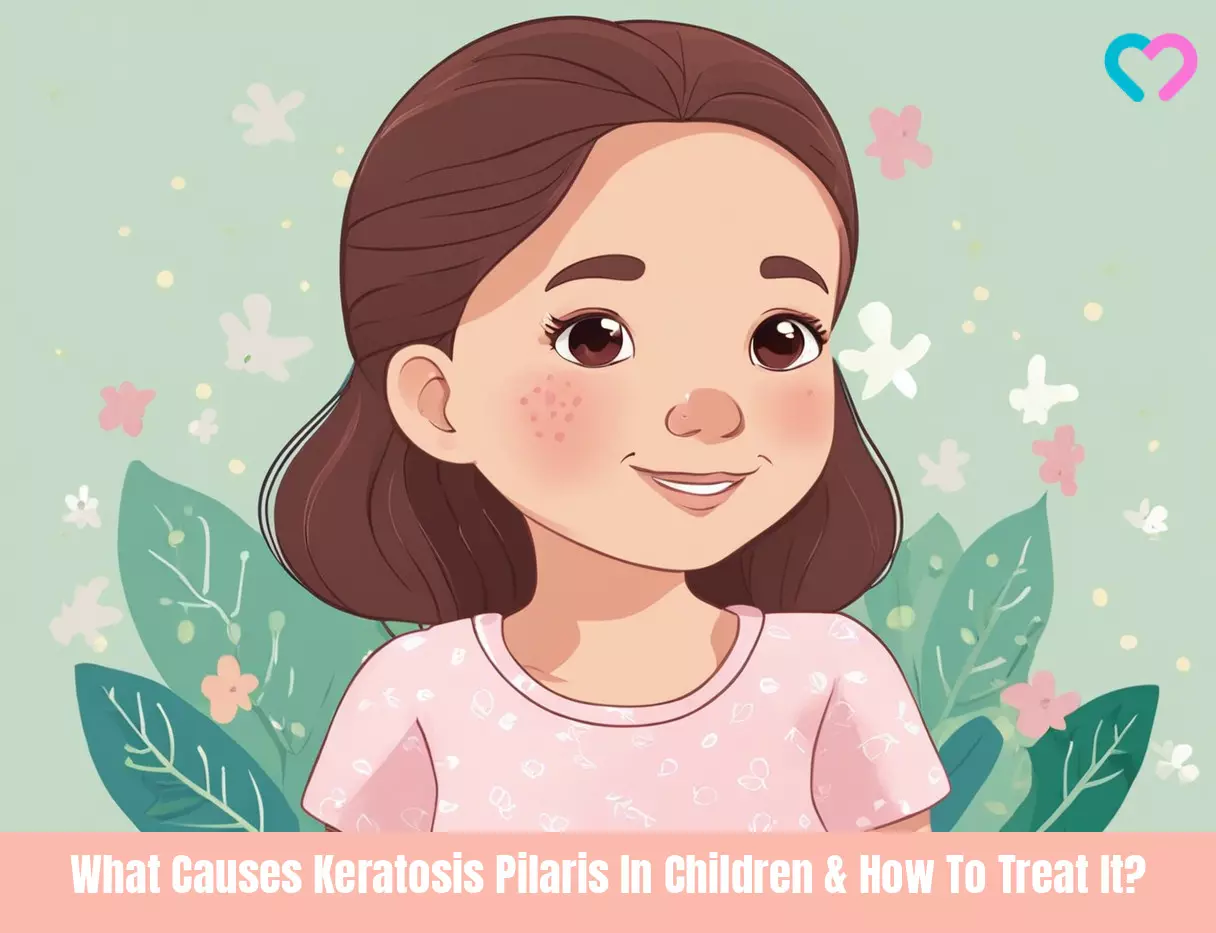
Image: Stable Diffusion/MomJunction Design Team
Know about over-the-counter treatments for keratosis pilaris in children. Discover which products may help reduce the appearance of bumps and redness.
Personal Experience: Source
MomJunction articles include first-hand experiences to provide you with better insights through real-life narratives. Here are the sources of personal accounts referenced in this article.
i. Keratosis Pilaris – Or, why my kid looks like a plucked chicken;http://www.allergistmommy.com/2012/05/keratosis-pilaris-or-why-my-kid-looks.html
References
- Keratosis pilaris; NHS UK
https://www.nhs.uk/about-us/ - Keratosis Pilaris: Who Gets and Causes; American Academy of Dermatology Association
https://www.aad.org/public/diseases/a-z/keratosis-pilaris-causes - Keratosis Pilaris; Cleveland Clinic
https://my.clevelandclinic.org/health/diseases/17758-keratosis-pilaris - Keratosis Pilaris (KP); Stanford Children’s Health
https://www.stanfordchildrens.org/en/topic/default?id=keratosis-pilaris-kp-85-P00296 - Gluten Causes Keratosis Pilaris(a.k.a. “chicken skin”): Fact or Myth?; Celiac Community Foundation Of Northern California
https://celiaccommunity.org/2016/gluten-keratosis-chicken-skin/ - Keratosis Pilaris; National Library of Medicine
https://www.ncbi.nlm.nih.gov/books/NBK546708/ - How to treat keratosis pilaris at home; American Academy of Dermatology Association
https://www.aad.org/news/ - Keratosis Pilaris : Self-care; American Academy of Dermatology Association
https://www.aad.org/public/diseases/a-z/keratosis-pilaris-self-care#:~:text=Exfoliate%20gently.&text=You%20can%20slough%20off%20these - Keratosis pilaris; DermNet
https://dermnetnz.org/topics/keratosis-pilaris - Keratosis Pilaris; Nationwide Children’s Hospital
https://www.nationwidechildrens.org/conditions/keratosis-pilaris - What is keratosis pilaris?; Harvard Health Publishing
https://www.health.harvard.edu/newsletter_article/By_the_way_doctor_What_is_keratosis_pilaris - Skin disorder: Keratosis pilaris; Intermountain Healthcare
https://intermountainhealthcare.org/ckr-ext/Dcmnt?ncid=529645402
Community Experiences
Join the conversation and become a part of our nurturing community! Share your stories, experiences, and insights to connect with fellow parents.
Read full bio of Dr. Tashawna Stokes
Read full bio of Dr Bisny T. Joseph
Read full bio of Dr. Ritika Shah
Read full bio of Vidya Tadapatri







